Reflections on seven Welsh elections - 1999 to 2026
 BBC
BBCI've been covering Welsh elections for BBC Wales since that narrowly-won referendum gave birth to the fledgling Welsh Parliament, the National Assembly for Wales as it was then known, 26 years ago.
Cardiff Bay has seen six elections since, along with six Labour first ministers (I know the first one, Alun Michael, was called first secretary), five Conservative group leaders, five Plaid Cymru leaders and three Liberal Democrat leaders.
A gender balance, with 30 men and 30 women in the chamber, was achieved in 2003 but lost at subsequent elections.
We saw the Lib Dems effectively replaced as a group by UKIP in the 2016 poll, seven weeks before the UK voted for Brexit, and the implosion of that new right-wing group with its seats going to Labour and the Conservatives in 2021.
The Liberal Democrats found themselves with just one Senedd politician for the past nine years, but that hasn't stopped the party wielding considerable influence.
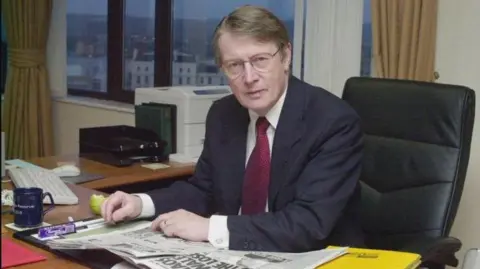 PA Media
PA MediaWe've gone from having very limited Welsh law-making powers, designed not to scare the horses, to a full law-making parliament with some tax raising powers and, from next year, a big expansion from the current 60 members to 96.
And 16 and 17-year olds have been able to vote in Senedd elections since 2021.
Much has changed, and that's without getting into the pandemic and devolved powers being used to tell us how often we can pop out of the house to walk the dog.
Surely no-one can now seriously make the charge, familiar two-and-a-half decades ago, that Cardiff Bay is just a talking shop?
The Senedd, and the Welsh government formed from it, can and does have an impact on our lives in Wales, often profoundly.
Looking across the six elections we've seen since 1999, the results have been less than dramatic if you focus on the number of seats the governing Labour Party has won over that time:
- 1999 - 28 seats
- 2003 - 30
- 2007 - 26
- 2011 - 30
- 2016 - 29
- 2021 - 30
The difference between Labour's best and worst results has been just four seats, and just one during the elections fought under Conservative UK governments from 2011 to 2021.
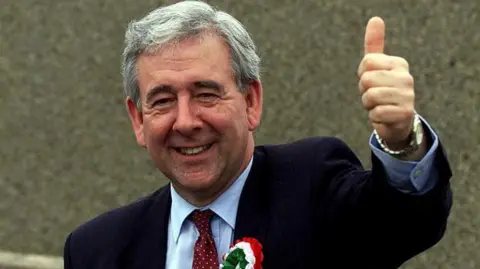 PA Media
PA MediaFirst election - 1999
That first result in May '99 came as a huge shock to Labour.
It had been expected to win a small majority at least, something which has always eluded the party, with exactly half being its high water mark in 2003, 2011 and four years ago.
The voting system was deliberately devised to make it harder to achieve big majorities election after election of the sort that might give voters the impression that Labour, with its bedrock of support in Wales, would single-handedly hold the reigns of power forever, encouraging complacency and perhaps even corruption.
The system made any majority at all more difficult to achieve than Labour anticipated, but there were extraordinary circumstances leading up to that first devolved Welsh election on 6 May 1999.
There was a perception that the then Welsh Labour leader, Alun Michael, had been imposed on the party by Tony Blair, "parachuted" was the phrase used, with trade union votes used to stitch-up the leadership for Michael over the more popular figure Rhodri Morgan.
Michael had replaced Ron Davies, who had quit suddenly as then prime minister Blair's Welsh secretary after a "moment of madness" on Clapham Common in south west London.
Morgan, who died in 2017, was perhaps seen as an unpredictable and slightly unruly politician, compared to the more tidy figure of Michael, who more easily fitted the Blairite mould.
Yet it was Morgan's charisma, political skills and pragmatism that arguably rescued Welsh devolution and brought stability to Cardiff Bay when Alun Michael's government collapsed after just nine months in office.
In 1999 claims of stitch-ups and control freakery from Downing Street were an unhelpful backdrop for Welsh Labour's assembly election campaign, as Michael took on the charismatic Plaid Cymru leader Dafydd Wigley.
In the election Labour lost its heartland south Wales valleys seats of Rhondda and Islwyn to Plaid, with Labour winning 28 of the 60 Cardiff Bay seats and Plaid securing 17, still its best result in a Welsh election.
The assembly, whose creation had been opposed by the Conservatives, served as something of a life-support system for a party that had lost all its Welsh MPs in the 1997 general election Labour landslide. It won nine assembly seats, all but one of them through the regional proportional top-up system, whilst the Liberal Democrats secured six.
Michael set up a minority Labour administration but quit in February 2000 ahead of a Plaid Cymru no-confidence motion in a row over EU funding.
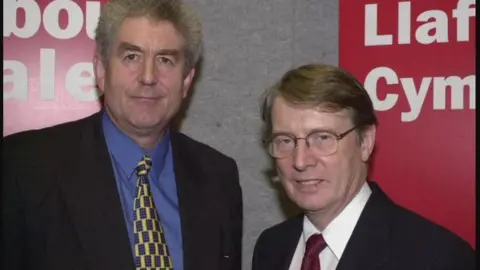 PA Media
PA MediaMorgan took over with a groundswell of public goodwill promising, with typical linguistic gusto, to "uncork the Welsh champagne bottle and let it fizz".
He constructed a Welsh Labour brand distinct from New Labour's in Westminster that stood it in good stead in the Welsh elections that followed.
"Clear red water" was the phrase used, said to have been created by his adviser, and the future first minister, Mark Drakeford.
In fact Morgan never actually uttered the words. They were to have been included in a key speech but he said later he had skipped over them to save time after looking around the room and deciding the talk was dragging on a bit.
A coalition deal with the Liberal Democrats, formed in October 2000, allowed Morgan to sleep a little easier at night, safe in the knowledge opposition parties would not gang up and ambush him at any moment in the way they had Michael.
Another Michael, Lib Dem group leader Mike German, became Wales' first deputy first minister.
Earlier, in late spring, Dafydd Wigley had stepped down due to ill health as Plaid leader to be replaced by Ieuan Wyn Jones.
Second election - 2003
With Tony Blair's Labour UK government still popular at Westminster, and the '99 local difficulties in Wales long gone, Welsh Labour enjoyed a resurgence at the 2003 assembly election. Distinctive eye-catching policies included free NHS prescriptions for all and free breakfasts for primary school children.
Rhondda and Islwyn returned to the Labour fold and the party held half the seats in Cardiff Bay - 30 out of 60.
The Conservatives were now just behind Plaid, up from nine seats to 11, with the Lib Dems staying on six.
Plaid Cymru lost five seats in 2003, dropping to twelve. Ieuan Wyn Jones quit both as party president, what had been the traditional title of its overall leader, and as its assembly group leader.
But he was later re-elected to the latter role and when Plaid changed the rules for its hierarchy - designating the Cardiff Bay leader as in charge of the whole party - he had effectively got both his former jobs back.
Third election - 2007
The May 2007 election was Welsh Labour's worst so far, when Blair's Labour UK government was increasingly unpopular, in particular over the decision to join the United States in invading Iraq.
Labour dropped to its lowest total recorded in Cardiff Bay, down to 26 seats, as Plaid Cymru advanced by three to 15, the Conservatives won one additional seat, taking its total to 12, and the Liberal Democrats remained a group of six.
With Labour still the largest party but well short of a majority, Rhodri Morgan casually, and undiplomatically, described his potential Lib Dem or Plaid Cymru coalition partners as being a choice between the "unpalatable and the inedible".
Both sets of talks failed and the focus turned to negotiations to form a Plaid-Conservative-Liberal Democrat "rainbow coalition". It appeared to be a genuine chance to oust Labour from power.
That prospect collapsed after two weeks, following a meeting of senior Lib Dems where such a deal was rejected.
The initiative returned to Labour and Morgan was re-nominated as first minister of a minority Labour administration a few days later.
In late June Labour and Plaid Cymru announced a deal to share power, backed by special party conferences the following week, with Ieuan Wyn Jones appointed deputy first minister.
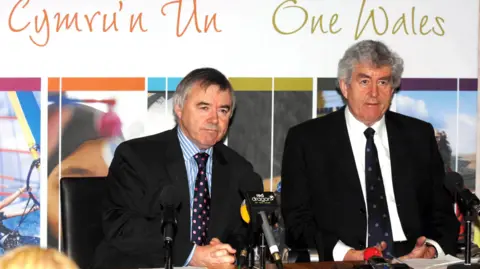 PA Media
PA MediaA "One Wales Agreement" included a referendum on giving the assembly full law-making powers "as soon as practicable, at or before the end of the assembly term" in 2011.
In that referendum, held in March 2011, Wales backed direct assembly law-making powers by 63.5% to 36.5%. The turnout was 35.4%.
The powers, allowing the institution to make its own laws on matters such as health and education that are devolved to it without having to seek permission from Westminster, took effect two months later.
By now Carwyn Jones was Welsh Labour leader and first minister, Nick Bourne was nearing 12 years as Conservative group leader and Liberal Democrat Kirsty Williams, since December 2008, had been the first woman to lead one of the four main political parties in Wales.
At Westminster, David Cameron and Nick Clegg had formed a Conservative-Liberal Democrat coalition UK government after the 2010 general election ending, 13 years of Labour rule.
 Getty Images
Getty ImagesFourth election - 2011
The spring 2011 Welsh election saw Labour gaining four seats and being back up to 30.
The Conservatives achieved a net gain of two and formed the main Welsh opposition party for the first time, with 14 seats.
Plaid Cymru found itself with just 11 seats, after losing four, and the Liberal Democrats were down one on five seats.
There was a painful sting in the tail for Tory group leader Bourne, who was punished by the assembly's electoral system for his party's stronger performance.
The Conservatives had done better in traditional first-past-the-post Westminster-style assembly seats meaning the party took fewer regional proportional "top-up" seats.
Bourne lost his Mid and West Wales regional seat and found himself out of the assembly. Andrew RT Davies won the ensuing leadership election and began the first of two stints at the helm of the Cardiff Bay Tory group.
After a poor Plaid Cymru performance, its leader Ieuan Wyn Jones announced his departure, for good this time, to be succeeded by the party's first female leader, Leanne Wood the following year, who led Plaid into the 2016 election.
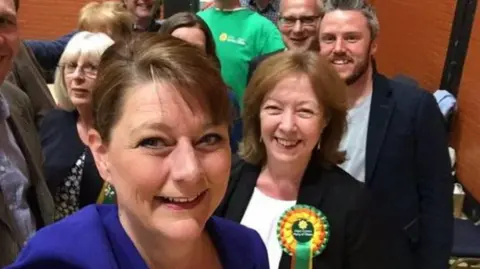 Plaid Cymru
Plaid CymruFifth election - 2016
By the time this fifth devolved poll came around Welsh Labour had been in governing for 17 years.
The messages from opposition parties were familiar ones - time for change and criticism of the performance of public services, especially the NHS.
Jeremy Corbyn, by now UK Labour leader, was popular with many on the left but a departure from the more centrist approach the party has tended to follow when it wins power.
Antisemitism rows were emerging, at one stage forcing Corbyn to re-schedule a campaign visit to Wales, and there were reports his name was playing badly on the doorstep in marginal seats.
Welsh Labour focused its messaging on the leadership of first minister Carwyn Jones.
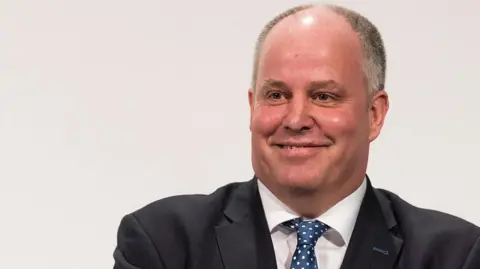 Getty Images
Getty ImagesThe Conservatives went into the election with wind in their sails.
A year earlier they had celebrated their best performance at a UK general election in Wales for more than three decades, winning 11of the 40 seats.
Tory leader Andrew RT Davies pledged to "knock an arrogant, tired, failing Labour Party off the perch".
Born and bred in Rhondda, Plaid Cymru's Wood sought to appeal to disillusioned Labour voters, telling them she "shared their values", as her party tried to expand beyond its traditional Welsh-speaking heartlands.
The election coincided with the build-up to June's referendum on the UK's European Union membership. Nigel Farage joined the Welsh election campaign trail as leader of the anti-EU UK Independence Party, predicting UKIP would win five seats in Cardiff Bay.
UKIP did better than that, taking seven, while Labour dropped one seat to 29 as Wood snatched Rhondda from Labour minister Leighton Andrews on an otherwise disappointing night for Plaid Cymru.
Plaid won 12 seats, an increase of one thanks to that Rhondda victory, whilst the Conservatives dropped from 14 to 11.
All that remained of the previous Liberal Democrats group of five was one solitary seat. Kirsty Williams hung-on to Brecon and Radnorshire but stepped down as Welsh Lib Dem leader.
Hurt by the symbolism and policies of the 2010-2015 Tory-Lib Dem coalition government at Westminster, Williams' party had been humiliated, squeezed into fifth place by UKIP in the regional assembly votes.
There was high drama to come.
Carwyn Jones pressed ahead with seeking nomination to remain Wales' first minister, but the opposition parties had a surprise in store.
Plaid Cymru nominated Leanne Wood and won the backing of the Conservatives and UKIP, while Jones secured the support of Liberal Democrat Kirsty Williams and, of course, his own Labour Party assembly members.
The vote was tied at 29-29. The assembly was adjourned to a later date.
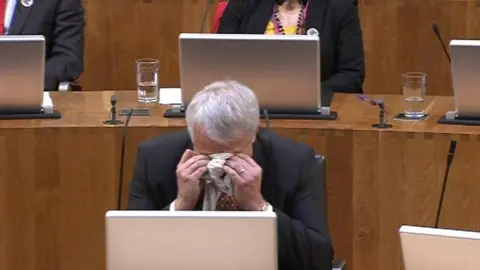 Senedd Cymru
Senedd CymruTwo days of talks between Labour and Plaid Cymru followed and Plaid agreed to allow the formation of a minority Labour government.
There had been "constructive and positive" discussions about "shared priorities for the coming assembly, and future working arrangements", the two parties said.
Back at the helm of the Welsh government, Jones brought Williams into his cabinet as education minister.
With her now voting with Labour politicians in Cardiff Bay, Jones was back to the 30 seats he commanded before the election, and not vulnerable to losing an opposition no-confidence vote.
Former Plaid Cymru leader and presiding officer Lord Elis Thomas, who died earlier this year and had left Plaid, joined the government in 2017 as culture, sport and tourism minister.
Jones now had a majority, with 31 of the 60 seats in the chamber.
Sixth election - 2021
And so to the sixth devolved election, in 2021, to an institution now called Senedd Cymru or Welsh Parliament, to reflect its much increased powers.
Carwyn Jones had been replaced by Mark Drakeford as Welsh Labour leader and first minister, Adam Price was leading Plaid Cymru after successfully challenging Wood for the leadership.
Andrew RT Davies was a few months into his second stint as Conservative group leader.
Paul Davies, the man who had replaced him in 2018 had quit during the pandemic for drinking wine in a Senedd tearoom while a Wales-wide alcohol ban was in place.
He, and three other politicians, were later cleared of breaking the Senedd's code of conduct.
The seven-strong UKIP group had split.
Politicians elected under its banner in 2016 were now either campaigning for what remained of UKIP, or Nigel Farage's new party Reform UK (previously created by Farage as the Brexit Party when he moved on from UKIP) or the Abolish the Assembly Party.
The election itself was fought in the shadow of the pandemic.
Powers over Covid restrictions in Wales had been used by the Welsh government and Drakeford's public profile had soared.
Big audiences had watched the first minister host televised news conferences, taking us through the latest rules on how we should live our lives to reduce spread of the deadly virus.
Many people were sceptical about the restrictions, and still resent the power Drakeford wielded over them.
But many others saw him as a sincere, competent and reassuring figure that compared well with the man calling the Covid shots in England, Boris Johnson.
Drakeford became popular with many Plaid Cymru supporters, as a living embodiment of a Wales confidently doing its own thing in a crisis, blunting Price's ability to criticise him.
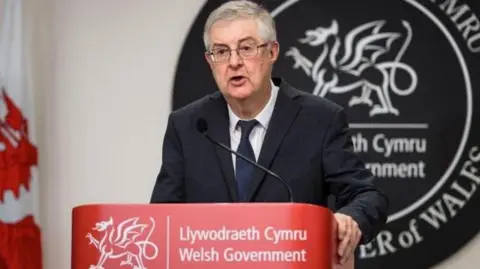 Getty Images
Getty ImagesThis contrasted sharply with how the pre-pandemic first minister was seen by pundits.
Surely Drakeford would struggle against Price's passionate speech-making in an election campaign?
He might be an effective first minister, but as a political leader in an election surely he would struggle?
Not now. The world had changed and Drakeford was a big electoral asset.
In this, the last 60 seat poll before the change to 96 next year, Labour again matched its best previous result, winning 30 seats.
At 46.6% turnout was the best ever for a Senedd election, despite some Covid restrictions remaining in place.
Yet still fewer than half of eligible voters cast their ballot.
The Welsh Conservatives celebrated their best ever Senedd election, winning 16 seats, five more than in 2016.
Plaid Cymru lost Rhondda back to Labour but added one more seat to its overall total which was now 13.
The Liberal Democrats lost their last constituency seat - Brecon and Radnorshire -but Welsh party leader Jane Dodds picked up a regional seat in Mid and West Wales.
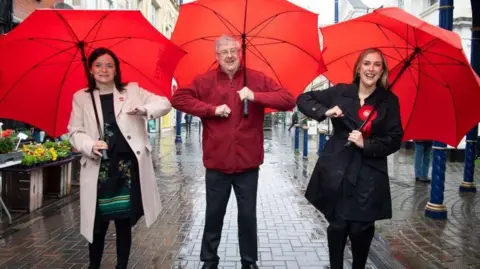 Getty Images
Getty ImagesSeventh election - 2026
The 2026 election, obviously, will be a very different one from the six that have gone before.
Now 96 seats are up for grabs with 16 constituencies electing six members each from lists of party candidates according to the share of the vote.
A lot can change over a year but polling in recent months has put Labour, Plaid Cymru and Reform broadly neck-and-neck, ahead of the Conservatives.
But a survey published this week suggested Plaid was pulling ahead, with Labour falling behind Reform.
No-one can confidently predict the shape of the new Welsh government to be formed after 7 May next year, or which party the new first minister will be from.
It became something of a cliché to describe the run-up to previous Welsh elections as potentially the most interesting so far.
This next one really will be - whatever the outcome!
